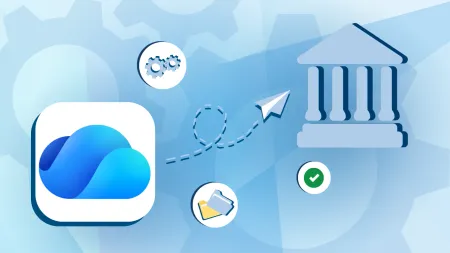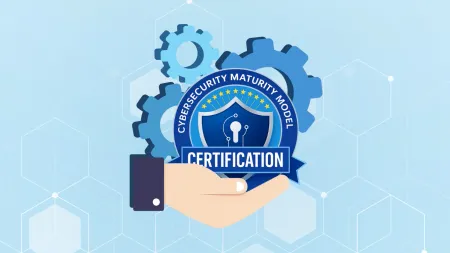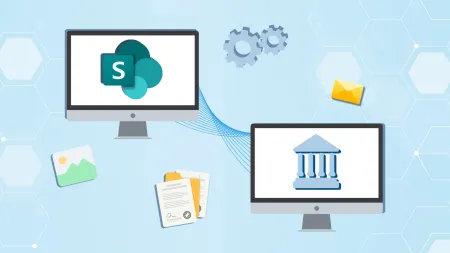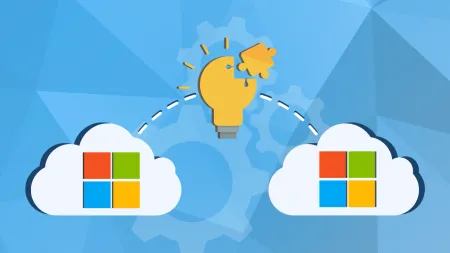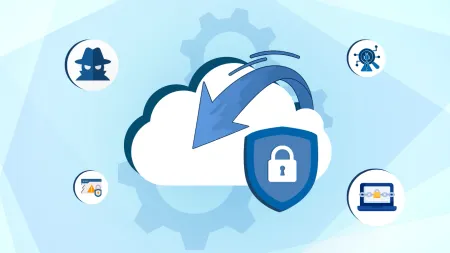Microsoft Copilot vs. GitHub Copilot: What's the Difference?
Discover key differences between Microsoft Copilot and GitHub Copilot to find the best AI tool for your business needs.

For years, artificial intelligence (AI) has captivated the tech world with its promise to revolutionize how businesses operate. For their part, businesses have eagerly adopted AI to streamline workflows and boost productivity. This is evident in the dramatic rise of AI adoption across industries—just between 2015 and 2019, the number of enterprises using AI grew by 270%.
In 2022, the arrival of ChatGPT marked a turning point. The groundbreaking generative AI has laid the foundation for AI assistants (or copilots) to operate in existing systems with unparalleled accessibility, thanks to its natural language (aka conversational) commands.
Copilot has become the go-to term for many AI chatbots. So, it might be tricky to differentiate between them.
In this blog, we’ll go over Microsoft Copilot vs GitHub Copilot, break down their capabilities, highlight key differences, and help you pick the perfect tool for your business.
What is Microsoft Copilot?
Microsoft Copilot (formerly Bing Chat) is an AI-powered companion designed to boost productivity within the Microsoft ecosystem. It has a conversational chat interface that lets you ask questions, generate images, summarize web pages, write computer code, or even perform tasks in Windows (depending on where it’s embedded).
Microsoft introduced Copilot in September 2023, unifying its AI-driven chatbots, such as Bing Chat and Viva Sales, into a cohesive AI experience that works across different applications and services. Additionally, Microsoft’s generative AI Copilot combines work data, web intelligence, and real-time user context for greater accuracy.
Since then, Microsoft has integrated Copilot into its other products and services with the goal of expanding its magic to all areas of Microsoft.
Across the Microsoft 365 product line and beyond, Microsoft Copilot enables businesses to get more done while saving money. It can streamline operations, automate repetitive tasks, and spark innovation by keeping employees focused on high-impact work.
For more details on Microsoft Copilot’s release and capabilities, visit our in-depth overview.
Microsoft Copilot Capabilities
Microsoft Copilot is evolving quickly and constantly adding new features. For now, here’s what it can do:
Meeting assistance in Teams: Provides real-time recaps, organizes notes, and identifies speakers during meetings. Detects relevant instructions and action items in the chat.
Email management in Outlook: Drafts emails based on context and previous communications, extracts insights, and offers tone and style coaching.
Data analysis in Excel: Analyzes data, creates visualizations, writes macro code, generates formulas, proposes scenarios, and identifies trends.
Advanced interaction with OneDrive: Finds information and files with simple queries like: “List documents with Maggie M. comments.”
Content processing: Analyzes, summarizes, extracts key points, and answers questions based on content from videos in Stream, web pages in Edge, and files in OneDrive.
Microsoft 365 integration: Works consistently across apps, such as converting Word documents to PowerPoint presentations.
Document management in Word: Writes, edits, and summarizes documents.
Presentation creation in PowerPoint: Generates presentations, provides visual storytelling, and responds to commands like “animate this slide.”
What is GitHub Copilot?
Unlike Microsoft’s AI companion, GitHub Copilot caters specifically to developers. Essentially, it’s an AI programming partner to enhance coding efficiency. GitHub’s generative AI Copilot can auto-complete code based on context, translate natural language into code, answer coding-related questions, assist with documentation, and much more.
GitHub (a Microsoft subsidiary) and OpenAI launched GitHub Copilot, the first modern-day AI copilot, in 2021. Over time, GitHub Copilot has evolved from basic coding assistance to a next-gen AI copilot for the entire development lifecycle. Microsoft’s GitHub Copilot X announcement marked a solid step forward on this front.
Coding can be frustrating, especially when it involves rote takes. GitHub’s AI companion empowers developers to write fewer boilerplates, code faster, and save cognitive energy to focus on higher-value tasks. This significantly increases productivity and morale, resulting in shorter software development cycles.
GitHub Copilot excels in C#, C++, Python, JavaScript, TypeScript, Go, and Ruby, but also supports many other languages and frameworks. From web development to data science, it can accelerate time-to-market and cut costs across industries.
GitHub Copilot Capabilities
GitHub Copilot goes beyond code completion, it can do a whole lot for your company:
- Availability: Accessible in supported IDEs, GitHub Mobile (chat interface), command line (GitHub CLI), and on GitHub.com (Copilot Enterprise).
- Code generation: Provides context-aware code completions, suggestions, and entire code snippets.
- Knowledge resource: Answers code-related questions and refers to definitions, documentation, and best practices about specific libraries and frameworks.
- AI pair programming: Helps with optimizing and fixing code, writing commit messages, generating unit tests, and more.
- Documentation: Explains code with inline comments and generates project documentation like readme markdowns or summaries for executive briefings.
- Pull request summarization: Summarizes code changes, impacted files, and key focus areas to accelerate review processes (Copilot Enterprise only).
- Personalized answers for organization: Uses internal knowledge-based documentation to provide answers tailored to specific needs and workflows (Copilot Enterprise only).
- Supports third-party extensions: Extends capabilities with additional tools, services, and data, like Docker and Teams Toolkit.
- Maintains Audit Logs: Records detailed audit logs to track user actions and activities within the organization, providing clear visibility and accountability.
What’s the Difference Between Microsoft Copilot and GitHub Copilot?

GitHub Copilot falls under the broader Microsoft Copilot umbrella, but at the same time stands out as a distinct tool with a different focus.
Let’s explore Microsoft Copilot vs GitHub Copilot in detail to understand what sets them apart.
Scope
Microsoft Copilot is versatile and designed to empower users of all skill levels across various Microsoft core applications—from Windows and Edge to the entire Microsoft 365 suite.
On the other hand, GitHub Copilot integrates with IDEs like Visual Studio Code and is designed for developers. This tool is invaluable for development teams looking to boost productivity and drive innovation in all coding-related tasks—from app development to DevOps.
Functionality
Microsoft Copilot brings an array of functionalities within the Microsoft ecosystem. For instance, it can draft and edit documents in Word, analyze and visualize data in Excel, and build apps in Power Platform. In Teams, it can organize discussion points and detect action items during meetings. You can even have Copilot compare two separate documents.
GitHub Copilot is centered on enhancing the coding experience within IDEs. It provides context-aware code completions and suggestions. It also aids in generating unit tests, debugging, and writing commit messages. Users can chat with Copilot to get coding-related explanations, optimizations, and more. Additionally, it can generate documentation for different audiences, such as executives and managers.
Implementation
Adopting Microsoft Copilot is straightforward for businesses already invested in Microsoft products, especially Microsoft 365. Within granted permissions, it pulls your data from organizational sources to provide intelligent assistance grounded in your business content and context.
GitHub Copilot plugs into supported IDEs, like Visual Studio, VS Code, JetBrains, and Neovim. Once enabled for a developer, it integrates smoothly into their existing development environments. After that, Copilot assists with coding and documentation tasks, ensuring immediate productivity gains.
Project Management
Microsoft Copilot can help managers complete projects on time, within scope, and to the highest quality standards. For example, Copilot can organize meetings, summarize discussions, and formulate action items in Teams, then use Planner to generate tasks and assign deadlines. It can even manage and track by providing insights into team workload, progress, and priorities. Based on that information, Copilot can draft progress summaries in Word, update the budget in Excel, and keep everyone informed with detailed updates via Outlook.
Githubb Copilot empowers developers to accelerate project delivery by up to 55%. It cuts through boilerplate-heavy tasks by building on existing solutions, reusable components, and public code. Beyond that, it can assist in formulating pull requests and Git commit descriptions to streamline code reviews and enhance collaboration. Copilot also has the potential to review GitHub issues and suggest actions to resolve them, further supporting developers in their workflows.
Pricing
Microsoft Copilot is available via two tiers:
- Individual: annual subscription with a monthly payment of $20.
- Business (Copilot for Microsoft 365): annual subscription with a monthly payment of $30 per user, valid base license required. Contact Agile IT to see if your license qualifies.
While Microsoft Copilot pricing depends on individual or business needs, additional industry-specific copilots exist. For example, Copilot for Sales connects with popular CRM solutions like Salesforce Sales Cloud and Dynamics 365 Sales to assist sellers within Microsoft 365.
Details on other Microsoft copilots are available on its website.
GitHub Copilot has three subscription tiers:
- Individual: $10 per month.
- Business: $19 per user per month.
- Enterprise: $39 per user per month.
Students, teachers, and maintainers of popular open-source repositories can access GitHub Copilot for free.
For more information on how these plans differ, visit GitHub’s website.
Microsoft Copilot vs. GitHub Copilot: Which is Right for Me?
Still unsure which Copilot fits your business? Consider your specific needs, business context, and teams’ existing workflows. If you need a unified AI assistant that works across various Microsoft applications and services, choose Microsoft Copilot. If your focus is to boost productivity for developers and techy users who crunch code daily, GitHub Copilot is the way to go.
Navigate Microsoft Cloud Adoption with Agile IT
Microsoft Copilot and GitHub Copilot are powerful AI tools that can boost efficiency, lighten repetitive workloads, spark creativity, and give your business a competitive edge.
That said, the effectiveness of any Copilot generative AI lives and dies by how well it fits with your existing systems, workflows, and data. Otherwise, it’s just a fancy gadget with limited potential.
As a Microsoft Solutions Partner, we specialize in helping businesses adopt Microsoft Cloud technologies—from AI solutions to infrastructure and even CMMC compliance.
Contact us today and learn how AI can understand your business, speak your language, and work for you.
